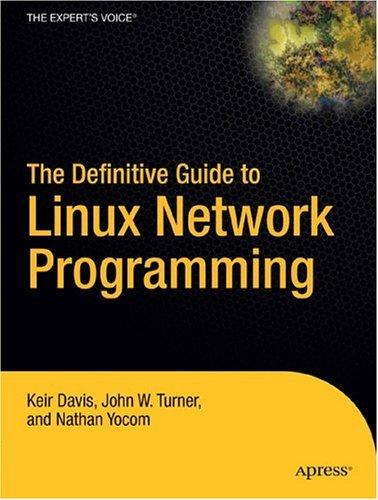
Book review.

As the title claims, the scope of The Definitive Guide to Linux Network Programming is broad. The authors take a hands-on approach, and each chapter contains concrete programming examples of varying sizes and complexities. The three main sections cover fundamental networking concepts, alternative design architectures and security. The book also contains an appendix on IPv6. In addition, all of the code can be downloaded from the publisher's Web site.
Many of the concepts presented in the book are quite general and not limited necessarily to Linux. Hence, the book can be used as a concise introduction for developers new to networking and socket programming. Intermediate-level developers, on the other hand, could benefit from the explanation of architecture and performance. For instance, the book contrasts multiplexing, pre-forking and multithreading server designs. Simple yet effective guidelines help developers make their design decisions.
The material in the book typically is presented in a self-contained manner, but you do need to be familiar with C. Also, in explaining a few points, the authors rely on C++ and advanced libraries in order to provide more realistic coding examples. For instance, a GUI chat example uses the C++ Standard Template Library (STL) and the Qt graphical library.
Roughly a third of the book discusses how to secure code at different levels, from buffer overruns to authentication. Developers should consider security to be an essential activity, on the same level as debugging and performance tuning. The book also contains a section that briefly introduces tools for automated code analysis. These can be useful instruments to improve code quality and application stability.
The book does have a few shortcomings. Because of its introductory nature, the descriptions of several topics may be confusing. At a minimum, some topics, including non-blocking sockets and OpenSSL BIO, may require further reading if you are interested in a more in-depth understanding. In addition, the book has no bibliography, and only limited pointers are offered to additional reference materials. Not-so-experienced programmers might benefit more from a more critical analysis of the code proposed in the book through exercises or extensions. Finally, the code examples contain some errors. The publisher's Web site has yet to make available the book's correction list.